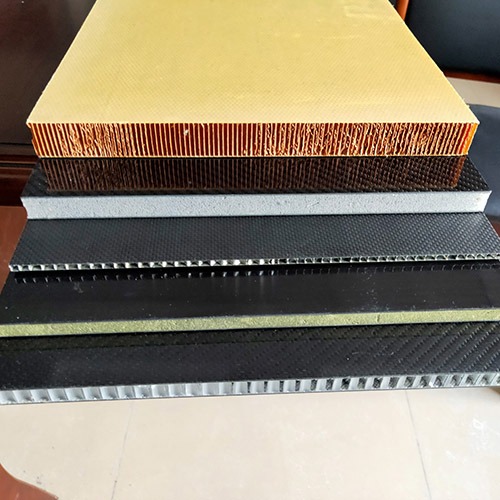Carbon Fiber Aramid Paper Honeycomb Composite Pane
Significantly enhances structural strength and hardness, reduces weight, and meets fire resistance requirements.
Ideal for aviation components, partition boards, train cabin roof panels, racing boats, and more.
A carbon fiber aramid paper honeycomb composite panel is a type of structural material that combines several different materials to achieve a combination of lightweight and high-strength properties. Let’s break down the components of this composite:
Carbon Fiber: Carbon fiber is a strong and lightweight material made up of thin fibers composed mostly of carbon atoms. It has exceptional tensile strength and stiffness, making it an ideal choice for applications where weight reduction and high strength are crucial.
Aramid Paper: Aramid paper is a type of paper made from aramid fibers, such as Kevlar. Aramid fibers are known for their high strength-to-weight ratio and resistance to abrasion. Aramid paper is often used as a reinforcing layer in composite materials.
Honeycomb Core: The honeycomb core is typically made from lightweight materials like aluminum, Nomex, or fiberglass. It consists of a series of hexagonal cells that are connected to each other. The honeycomb structure provides excellent stiffness and strength with minimal weight.
When these materials are combined into a composite panel, you get a structure that benefits from the strengths of each component. Here’s a general overview of the manufacturing process:
Preparation: Carbon fiber sheets are impregnated with resin to create rigid carbon fiber layers. Aramid paper may also be impregnated with resin for added strength.
Layering: The carbon fiber sheets and aramid paper layers are alternated to create a stack. The honeycomb core is sandwiched between these layers.
Curing: The stack is placed in a mold and subjected to heat and pressure. The resin impregnating the carbon fiber and aramid layers undergoes a curing process, hardening into a solid matrix. This binds the layers together and ensures the structural integrity of the composite.
Trimming and Finishing: Once the composite has cured, excess material is trimmed, and the panel is finished to its final dimensions. This may involve cutting, sanding, and other machining processes.
